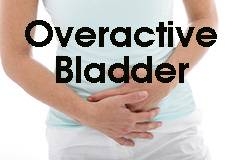Urge Incontinence
Medically Reviewed by Charles Tatum, MD
“Pelvic Health’ is a new phrase used among professionals in women’s health,” says McLeod Gynecologist, Dr. Charles Tatum. “We know what it means, but to the layperson, the descriptor can be confusing or even misleading. To clarify, pelvic health refers to five areas of concern that affect more than 1 in 3 women.”
Pelvic Health includes:
- Urge Incontinence or what many women experience as “overactive bladder.”
- Stress Incontinence or bladder leakage when coughing, sneezing, laughing or lifting. We cover this issue in another article. Click the link to read it.
- Endometriosis is a painful condition when uterine cells grow outside the uterus.
- Menorrhagia or abnormally heavy menstrual periods.
- Uterine Fibroids or benign tumors in the uterus.
- Pelvic Organ Prolapse (uterine, bladder, and rectal prolapse or drooping)
This article covers the first topic — the cause and some treatments for what women describe as a sudden urge to urinate. This may be followed by leakage before she can make it to the bathroom. In short, the problem results from a communication miscue between the brain and the bladder, or the decrease or relaxation of bladder muscle tone.
Causes. In some cases, the bladder spasms are a result of thyroid, Multiple Sclerosis, Parkinson’s or Alzheimer’s Disease. Other health conditions that can trigger urge incontinence are uncontrolled diabetes or a stroke. Some anti-anxiety drugs or diuretics (medications that promote production of urine, so-called “water pills”) also lead to urge incontinence. Constipation may also trigger the problem, as well as caffeinated drinks or alcohol. Another cause results from relaxation of the pelvic floor (bladder prolapse or dropping) stemming from age, childbirth or heavy lifting or exercise. However, in many cases there is no identifiable cause.
The Bladder Diary. Using your smartphone to keep track of when you “feel the urge” or accidentally suffer urine leakage is a good first step before you meet with your personal physician. This diary can be a key to determining the cause of your incontinence. It’s likely that your doctor will be familiar with the problem, because urinary incontinence is reportedly one of the most common medical conditions seen by primary care physicians. Thirty three percent of women over the age of 50 will experience these symptoms, however less than 10% will seek treatment.
Possible Treatments.
- Kegels, exercises for the pelvic floor muscles, and bladder training are some of the best treatments for urge incontinence. In a sense, you are using behavior therapy to retrain the link between your brain and bladder. Kegels strengthen the muscles while bladder training helps you learn to wait longer between bathroom visits. Electrical stimulation and biofeedback are also used as part of bladder training
- Medications are available to help control your urinary “urges.”
- For patients who don’t find success in the above options, surgery can increase bladder storage and decrease pressure on the bladder. This surgery is most often performed by trained OB/GYN physicians or urologist specializing in pelvic floor relaxation conditions.
Some women experience a combination of stress and urge incontinence. There might be unexpected leakage from a sneeze or cough, as well as frequent urges to void. A combination of treatments might be needed to resolve both issues. Knowing the symptoms to report to family physicians, and taking action to manage symptoms will help women improve their quality of life.
Sources include: McLeod Health, American Urogynecologic Society, Continence Foundation of America, National Institutes of Health, American Academy of Family Physicians, National Women’s Health Resource Center
-
McLEOD REGIONAL MEDICAL CENTER FLORENCE
843-777-2000 -
McLEOD DARLINGTON
843-777-1100 -
McLEOD DILLON
843-774-4111 -
McLEOD LORIS
843-716-7000 -
McLEOD SEACOAST
843-390-8100 -
McLEOD CHERAW
843-537-7881 -
McLEOD CLARENDON
803-433-3000



-
McLEOD REGIONAL MEDICAL CENTER FLORENCE
843-777-2000 -
McLEOD DARLINGTON
843-777-1100 -
McLEOD DILLON
843-774-4111 -
McLEOD LORIS
843-716-7000 -
McLEOD SEACOAST
843-390-8100 -
McLEOD CHERAW
843-537-7881 -
McLEOD CLARENDON
803-433-3000
 Find a Doctor
Find a Doctor  Locations
Locations  Services
Services 